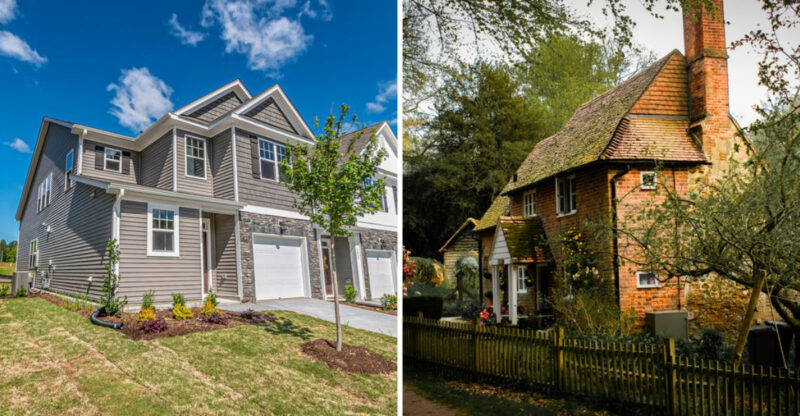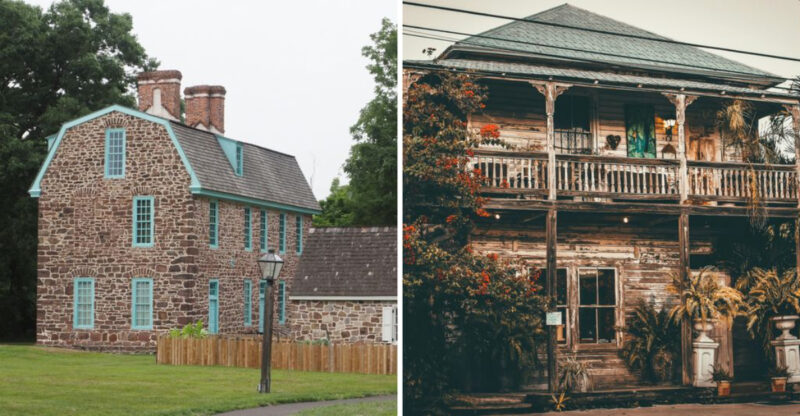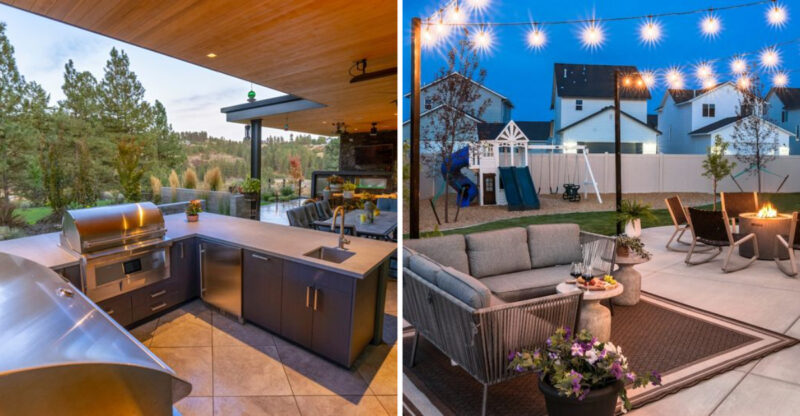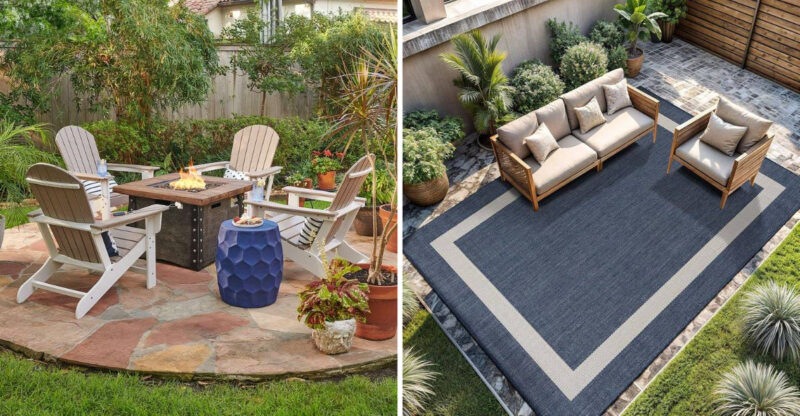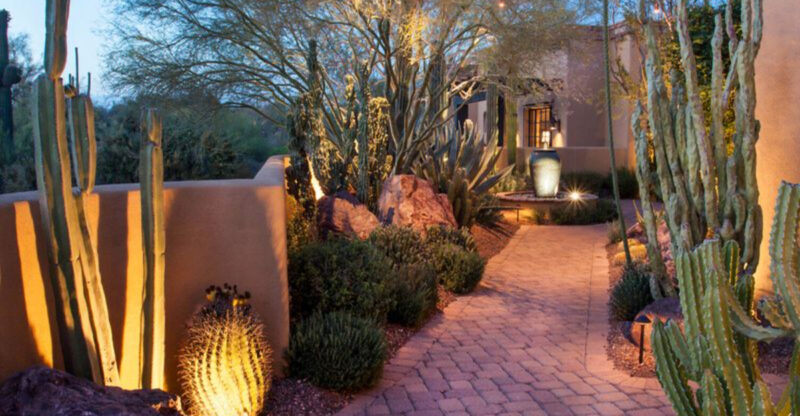7 Classic Exterior Details From El Paso’s Historic Districts
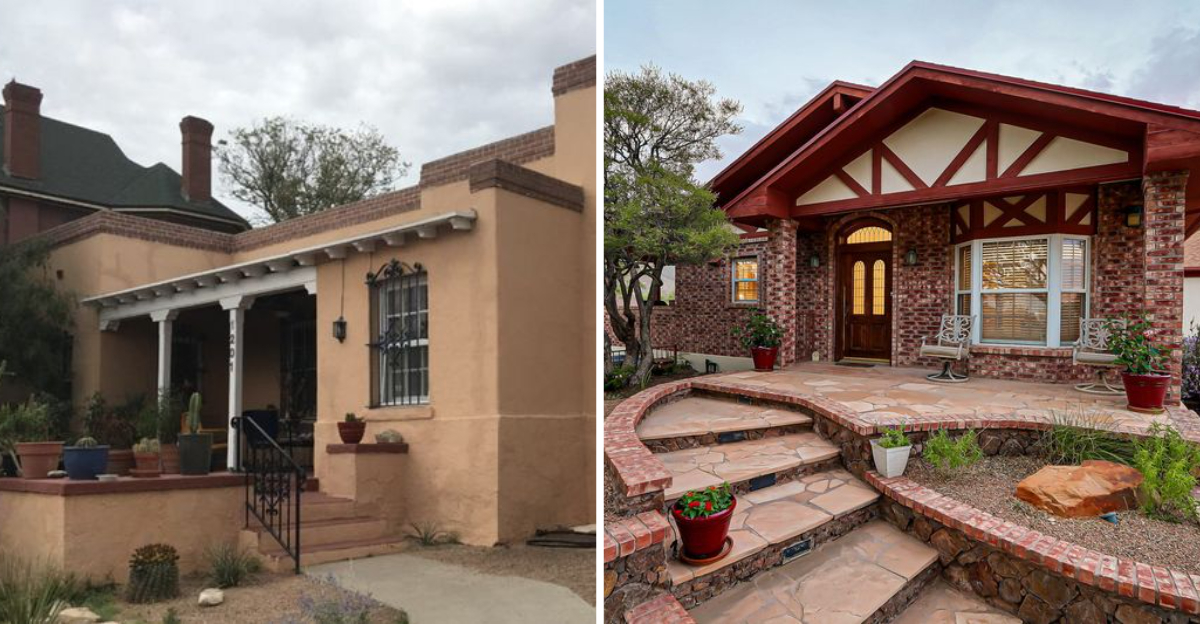
Walking through El Paso’s historic districts feels like stepping back in time.
The unique blend of Spanish, Mexican, and American architectural influences creates a distinctive character you won’t find anywhere else.
These seven classic exterior details tell stories of our city’s rich cultural heritage and adaptation to the desert environment, making our historic neighborhoods truly special places to explore.
1. Stucco Walls

The smooth, earthy stucco walls dominating El Paso’s historic districts aren’t just beautiful they’re practical desert survival tools. Traditional lime-based stucco provided natural insulation against extreme temperatures, keeping homes cool during scorching summers and warm during chilly desert nights.
Many historic homes feature hand-textured finishes that create subtle shadow patterns throughout the day. These walls typically showcase warm earth tones like adobe, terracotta, and cream that mirror the surrounding Chihuahuan Desert landscape.
Did you know? Before modern materials, local artisans mixed lime with sand, water, and sometimes animal hair to create durable stucco that could flex slightly with building movement, preventing cracks in this earthquake-prone region.
2. Red Clay Roof Tiles

Nothing captures Southwestern charm quite like the distinctive red clay roof tiles crowning El Paso’s historic homes. These curved terracotta beauties, often called Spanish or Mission tiles, weren’t just decorative they’re engineering marvels perfectly suited for our desert climate.
The half-cylinder shape creates natural air channels underneath, providing crucial insulation against intense sun. When it does rain, their overlapping design efficiently channels water away from the structure. Though some original tiles date back over a century, many homeowners treasure them like family heirlooms.
Each handmade tile bears subtle variations in color and shape, creating roofscapes with character and depth that machine-made alternatives simply can’t replicate.
3. Ornate Ironwork
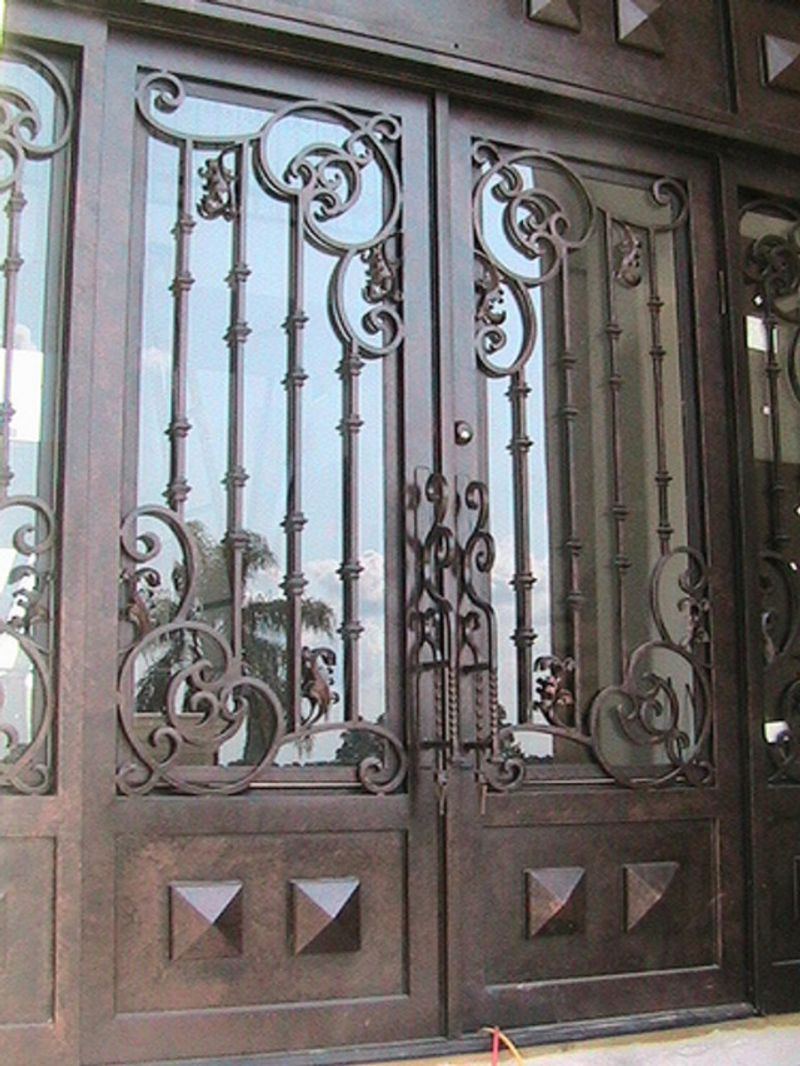
If you look closely at El Paso’s historic homes, you’ll spot intricate ironwork that transforms functional elements into works of art. Elaborate window grilles (called rejas) and balcony railings showcase delicate scrollwork, floral motifs, and geometric patterns that reflect Spanish colonial and Mexican artistic traditions.
Beyond their obvious beauty, these iron elements served important practical purposes. Window grilles provided security while allowing cooling breezes to flow through homes during hot summers. Many designs incorporate symbolic elements pomegranates representing fertility or religious symbols offering protection.
Master blacksmiths hand-forged these pieces using techniques passed down through generations. Today, these ironwork treasures remain among the most photographed features in neighborhoods like Sunset Heights and Manhattan Heights.
4. Arched Doorways
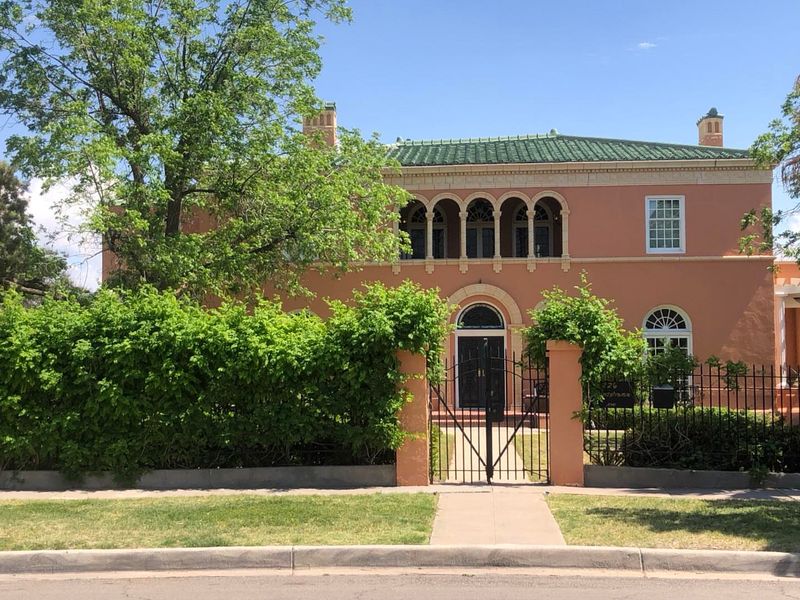
Graceful arched doorways welcome visitors into El Paso’s historic homes with a touch of Mediterranean elegance. These architectural features range from simple curved tops to elaborate multi-layered designs that frame heavy wooden doors with stunning visual impact.
Many doorways incorporate decorative stone surrounds carved with regional motifs yucca flowers, desert animals, or geometric patterns inspired by indigenous art. The deep recesses created by these arches serve a practical purpose too, providing much-needed shade at entryways.
When restoration experts examine these arches, they often discover multiple paint layers revealing how color preferences evolved over decades. Blues (believed to repel insects) and warm terracottas appear frequently, connecting these homes to similar architectural traditions found throughout Mexico and Spain.
5. Wooden Shutters
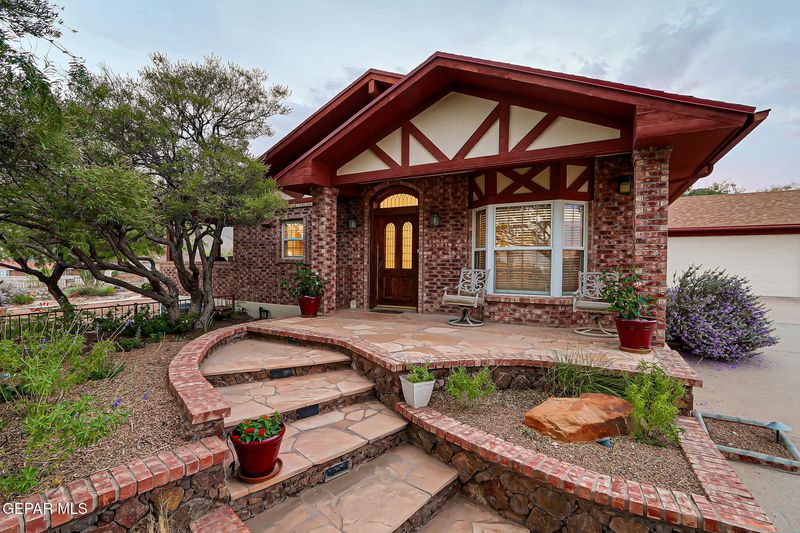
Wooden shutters frame the windows of El Paso’s most authentic historic homes, adding both character and crucial climate control. Unlike modern decorative versions, these shutters were fully functional designed to be closed during fierce dust storms or to block intense afternoon sun while still allowing air circulation through adjustable slats.
Homeowners often painted shutters in striking colors that contrasted with neutral stucco walls deep greens, blues, and rich browns being traditional favorites. The hardware tells its own story, with hand-forged hinges and latches crafted by local blacksmiths showing distinctive regional styles.
Though challenging to maintain in our harsh desert environment, well-preserved original shutters significantly increase a historic home’s authenticity and value. Many restoration projects carefully replicate missing shutters using old-growth woods similar to the originals.
6. Decorative Tile Accents
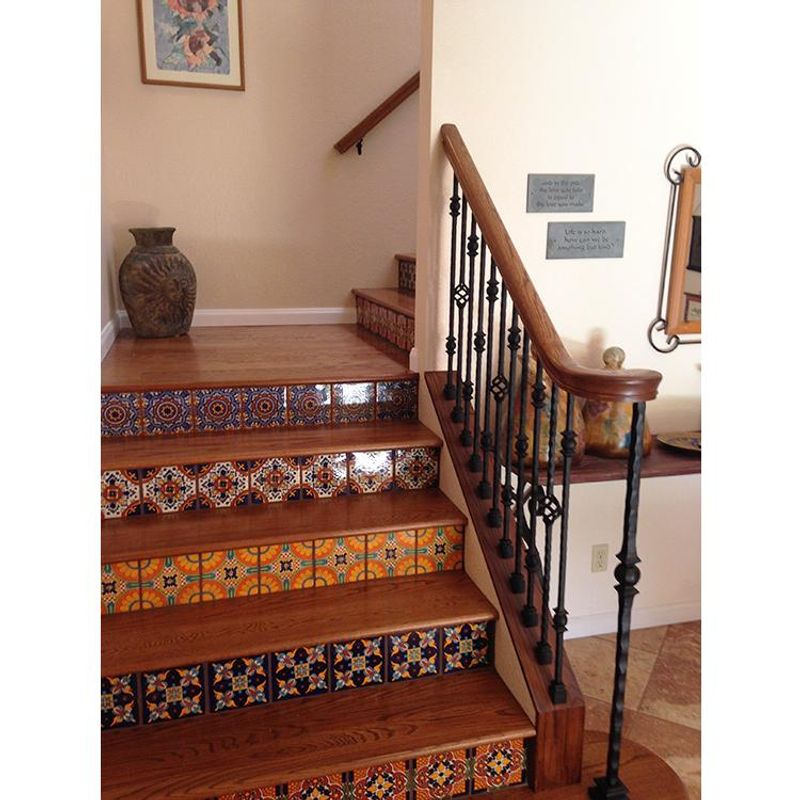
Vibrant decorative tiles bring unexpected bursts of color to El Paso’s historic architecture. These hand-painted treasures typically appear on stair risers, around fountains, embedded in garden walls, or framing entryways where they create focal points against neutral stucco backgrounds.
Many feature Talavera-style designs with intricate geometric patterns or nature motifs in brilliant blues, yellows, and greens. Others showcase Mexican-inspired imagery cacti, desert wildlife, or stylized sun motifs that connect buildings to our unique border culture.
Historians can often date homes by examining these tile patterns, as certain designs gained popularity during specific periods. While some tiles were imported from Mexico, others came from local artisans who developed distinctive El Paso variations that combined multiple cultural influences into something uniquely ours.
7. Covered Verandas
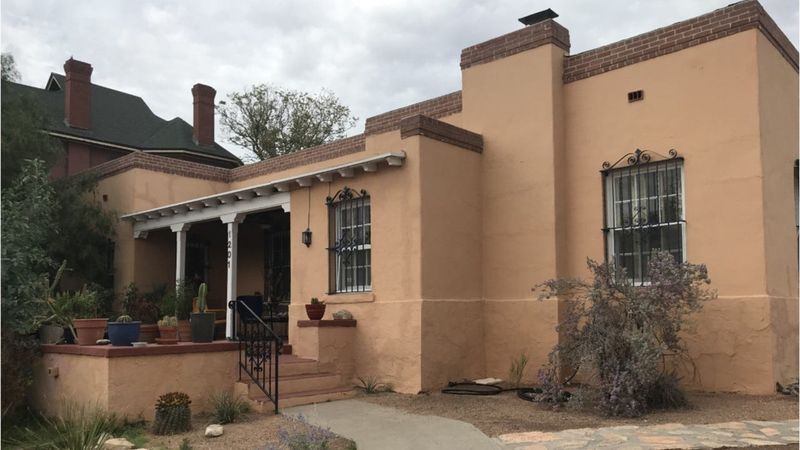
Wide covered verandas extend living spaces outdoors in El Paso’s historic districts, creating perfect spots for catching evening breezes after scorching summer days. These architectural features reflect practical adaptation to desert living long before air conditioning existed.
Supported by wooden posts or graceful columns, these shaded outdoor rooms often feature distinctive ceiling treatments exposed vigas (wooden beams) or colorfully painted wooden planks called latillas. Some verandas wrap around multiple sides of homes, allowing residents to follow shade patterns throughout the day.
Front verandas particularly encouraged community connection, creating semi-public spaces where neighbors could chat while remaining protected from harsh sun. During restoration, preservationists carefully document original veranda details from hand-turned balusters to ceiling patterns ensuring these essential desert living spaces maintain their authentic character.

